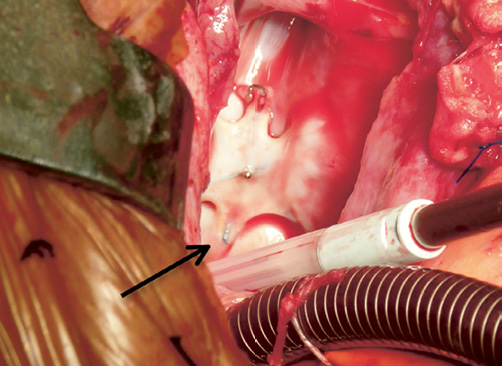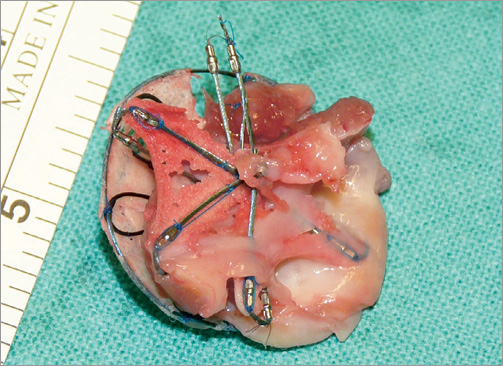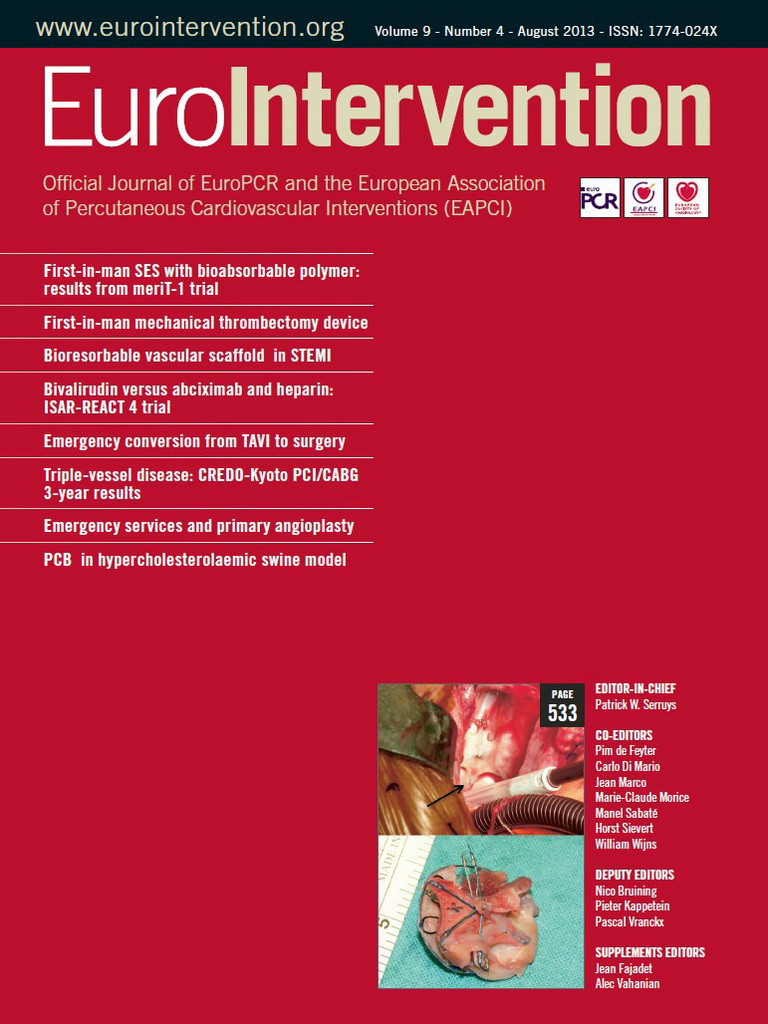A 32-year-old female suffered a transient ischaemic attack (TIA) in the territory of the middle cerebral artery, and a patent foramen ovale (PFO) and an atrial septal aneurysm (ASA) were diagnosed using transoesophagic echocardiography (TEE). A 20 mm ATRIASEPT™ (Cardia Inc., Eagan, MN, USA) device was successfully implanted.
Three months later the patient was admitted to hospital in shock with cardiac tamponade. Pericardiocentesis was immediately performed but haemodynamic instability meant transferring the patient to the operating room (OR) for emergency surgery.
Intraoperatively, lacerations in the aorta and the top of the right atria were identified (Figure 1). Defects were provisionally repaired and the patient was stabilised in the intensive care unit. Echocardiography and fluoroscopy showed a correct position and no structural damage of the device. Days later, on-pump surgery was performed and the device was removed. The ATRIASEPT device showed the following defect in the structure: several of the coupler wires attached to one of the right/centre struts were fractured (Figure 2). This defect had eroded the right atrium and aortic root causing the damage.

Figure 1. Intraoperative image. The arrow points to the wires that caused the lacerations in the aorta and the top of the right atria.

Figure 2. Details of the device removed. Several of the coupler wires attached to one of the right/centre struts were fractured.
The patient recovered well in the postoperative period and was discharged 25 days later, uneventfully. In the follow-up performed 12 months later the patient was well without sequelae.
Conflict of interest statement
The authors have no conflicts of interest to declare.

